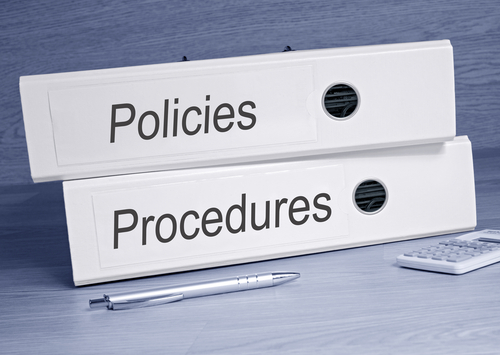Modern security solutions have evolved well beyond simple security camera viewing, door and window contacts, and access control credentials. Without proper management, electronic security solutions can be a risk to organizational policies and procedures.
The Hidden Costs
Modern security departments must have clearly defined operational policies and procedures. Vague or poorly communicated expectations are a physical, cyber, and financial risk.
A working knowledge of computers and security software is required to operate a modern security system. Without proper training, staff can inadvertently cause operational challenges. These challenges are amplified with integrated systems. Access control and video surveillance systems, for example, are often integrated to provide video feeds of staff and visitors throughout the facility. Failure to effectively operate software can result in missed observations or a failure to capture unauthorized access attempts.
Log files and alarm reports may need to be prepared and delivered to administrators and managers in a scheduled fashion. If your organization doesn’t budget for a managed solution with scheduled report delivery, you’ll be relying on your existing staff to schedule, develop, and manage these reports. This is likely in addition to their baseline duties, so the risk of a missing or incomplete report increases.
Cybersecurity is a primary concern for any security solution. System operators must adhere to IT security protocols involving password complexity, password sharing, use of USB devices, web browsing, email attachment protocols, and other daily risks. Security department leaders must leverage IT to develop training for security staff. A cybersecurity vulnerability can result in a data breach, interrupted operations, loss of revenue, and a diminished brand value due to high profile incidents.
Employees and visitors, along with the security team, must be diligent as well. Piggybacking and door propping are two vulnerabilities that are easy to avoid. Piggybacking, or holding the door for additional staff to enter, is usually meant as a courtesy. While a nice gesture, it’s a significant risk to the organization. Unauthorized personnel could easily walk in with authorized employees. Door propping is typically a convenience. Remote exit doors may be propped open with a rock or other small object. Though helpful to employees moving equipment, or convenient for employees who may only need to be outside of the building for a minute or two, an unauthorized person can easily slip into the building through a propped door. Educate employees about the risks of piggybacking and propped doors. Consider additional electronic measures can help as well. Modern devices, like biometric access control readers, grant access to employees and keep unauthorized personnel out of the area.
You’ll Need a Long-Term Solution
A trusted security partner can work with you to develop and update your security policies and procedures.
Whether your electronic security system is an IP-based video or access control system, or a fully integrated security management system, it’s a serious investment that deserves detailed maintenance. Systems supported by regular maintenance programs and SMAs, like the Vision Investment Protection (VIP) program, can help you to eliminate procedural risks. Your solution will be completely up-to-date, backed-up to your performance expectations, and consistently cyber secure. Maintenance is performed regularly, and the system’s server hardware and software aren’t an IT concern.
Vision Investment Protection consists of maintenance and service plan levels that, like your system, can grow and change. The complexity of your facility’s system will determine the appropriate VIP service plan level. Your VIP plan can then be customized as your electronic security system expands.
VIP plans include many of these benefits:
- 24/7 priority contact representatives
- Expedited response times
- Emergency weekend response
- Version upgrades
- Cybersecurity updates
- VIP rates and discounts
- Ongoing preventative maintenance
- Recurring system optimization audits by engineering staff
- Your Opportunity to Act Today
The goal of a security assessment and site survey is to uncover potential threats at schools, buildings, and campuses of all sizes. Ultimately, these solutions can help integrate a variety of technologies as part of a plan that works in unison to help secure occupants, protect valuable assets, and assist in preventing physical access to sensitive areas.
Request a Security Consultation Today



